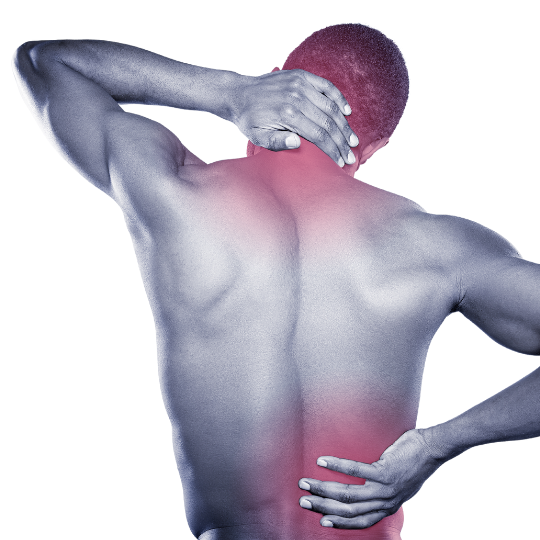Once a person catches COVID, it doesn't always go away easily. Approximately 10-35% of COVID survivors suffer from Long Covid whilst 85% of those who were hospitalised as a result of COVID experienced severe post-COVID symptoms.
Credit: https://www.ncbi.nlm.nih.gov/pmc/articles/PMC9846887/
Even after the line fades on the test, many COVID patients still find themselves facing long-term illnesses such as fatigue, shortness of breath, 'brain fog' and insomnia. But what if there was a solution?
When COVID enters your body, it enters deep into your lungs, into the Alveoli. It is a small organ that medicine normally cannot reach. This means that lung disease is difficult to treat conventionally. The only exception to this is: Molecular Hydrogen.
In China, Molecular Hydrogen is utilized in their post-Coronavirus treatment programs. Let's explore why Hydrogen helps Post-COVID symptoms.
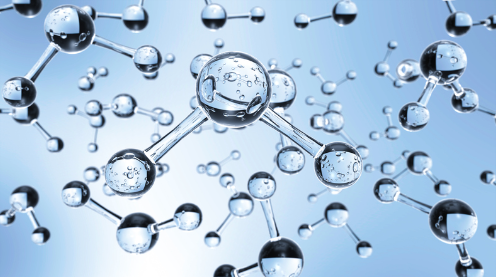
1. Antioxidant
The antioxidative effects of molecular hydrogen neutralises toxic free radicals formed in the lungs by the COVID virus, which relieves oxidative stress and repairs cells. Hydrogen selectively targets the bad free radicals while leaving all other cells untouched. The only byproduct of this neutralisation is water! As Hydrogen is capable of selectively neutralising toxic free radicals without affecting other body cells, it means that there are no side-effects or contraindications.
2. Anti-Inflammatory
Inflammation is your body's natural response to disease but chronic inflammation can lead to long-term health issues. When your body recovers poorly post-COVID, it's because your body's inflammatory response is ringing its alarm bells while it detects the oxidative stress in your body. By neutralising free radicals, Hydrogen relieves your body's inflammation.
3. Improves Sleep
Oxidative stress can affect sleep. By neutralising it, Hydrogen helps you get the sleep you deserve. Also, when your body is less inflamed, sleep becomes more comfortable and natural.
4. Boosts Energy
Fatigue is a common Post-COVID symptom. With Hydrogen's reparative effect on cells, it brings back your cell's ability to generate energy to give your body the boost it needs. Furthermore, with Hydrogen, you'd be sleeping better which means that you'd have more energy during the day!
Discover how molecular hydrogen aids Post-COVID recovery: https://youtu.be/Kzdw5XnOiZk?si=UtQOoQLT5jRgWffG
Our Post-COVID Recovery Care Plan
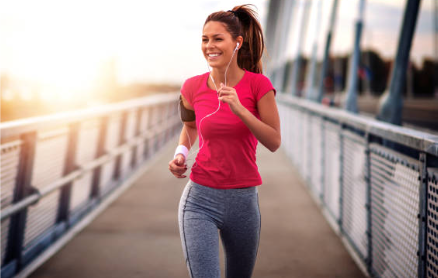
Hi-Bliss Hydrogen Therapy combines the curative effects of Molecular Hydrogen with our certified physiotherapists to help patients recover after contracting COVID. Beyond just treating the symptoms, Hi-Bliss Hydrogen Therapy also guides you on lifestyle changes that supplement our Hydrogen Therapy to help you solve your health conditions from its root cause.
If you are interested in finding out how Hi-Bliss Hydrogen Therapy can help you, make your appointment now!
Knee Pain is a condition that many people of all ages face during their lives. It can have a wide variety of causes and may happen suddenly with great intensity or may manifest as a dull ache over a long period of time.

Over 50% of Malaysians are either overweight or obese. This means that if you aren’t overweight yourself, you are very likely to know a person who is overweight or obese. Structures of the Anterior Knee such as the Patella, the largest sesamoid bone in the body, experience forces equal to up to five times our body weight. Having a high body weight can contribute to these bones and joints overworking to compensate. More wear and tear will occur on the knee as a result.

The most common form of Knee Injury is Knee Sprain. According to a study, strains and pains accounted for more than 40% of knee injuries. A study conducted in 2015 estimates that 32% and 57% of all knee strains and sprains occurred at a sports venue.
One of the major sources of knee injuries comes from Anterior Cruciate Ligament (ACL) Injuries. These injuries are common in athletes who participate in sports that involve a lot of high-impact pivoting movements. This includes sports like football (also known as soccer in the United States), basketball and badminton.
Another sports-related knee injury is the Meniscus Tear which occurs in sports that involve a lot of twisting and tackling of the knee.

As you get older, your muscles and bones start to deteriorate. This can cause weakness and pain in your joints. Furthermore, as you get older, the Menisci (cushioning in your knees) will start to wear away causing a condition known as Osteoarthritis.

Known also as a Popliteal Cyst, a Baker Cyst is a fluid-filled cyst that may manifest at the back of the knee causing stiffness and discomfort. These cysts normally form due to meniscus tears or osteoarthritis. This happens as a result of the body’s response to inflammation – increasing the flow of synovial fluid until it accumulates behind the knee.
Non-surgical treatment options are available for managing Baker Cysts such as the usage of NSAIDs (Non-Steroidal Anti-Inflammatory Drugs), Steroid Injections and Aspiration (removal of the fluids). However, large cysts that are causing nerve or vascular problems may be removed via excision surgery.

If you are suffering from Osteoarthritis of the knee, you will likely experience pain while walking, particularly when going up or down inclines like hills or stairs. You may hear a grinding or grating sound in your joints while moving it. In severe cases, your knees might even buckle, causing imbalance or difficulty in balancing. We have written an article about Osteoarthritis, click here to read it.
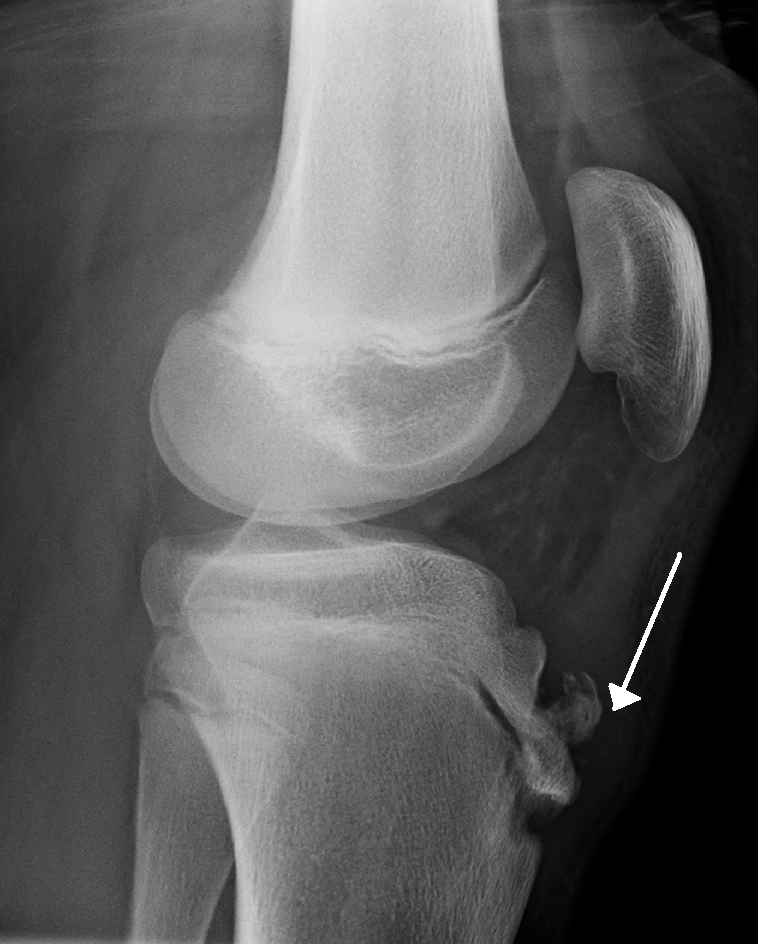
Osgood-Schlatter Disease is a type of swelling below the knee joint along the tendons on the front of the knee. It is caused by irritation of the bone growth plate and mainly affects children, especially growing children who are active in sports.
This condition usually goes away with ample bed rest and a reduction of intensive activity for children who are susceptible to the condition. Ice Packs after activity and the usage of knee pads may help reduce the effects of the condition. Medicine such as acetaminophen or NSAIDs may be used as advised by your doctor.

Bone infections are also known as osteomyelitis and they may be responsible for acute or chronic knee pains. It occurs when bacteria enters the bone through your bloodstream or through an open wound. Symptoms of osteomyelitis include fevers, chills, local swelling and general discomfort.
Treatment is usually conducted with antibiotics to kill off the harmful bacteria and, in severe cases, surgery.
Though certain knee pain conditions require medical intervention by your doctor, here are some things you can do at home to assist your recovery journey.

Bedrest is an important aspect of recovering from bouts of knee pain as movement can cause compression on the knee joint which prevents it from recovering as quickly as it should. When lying down, keep your knee raised to reduce swelling. You can use a pillow underneath your knee while sleeping to keep it elevated.

Icing the area is another thing you can do from your home to improve recovery from knee injuries. Wrap some ice cubes or an ice pack in a bundle of cloth and apply it to the swollen or painful areas. Refrain from pressing the ice directly onto the skin to prevent discomfort or injury.
Always warm up before exercise and cool down after you are done. This can be done by conducting some stretches of the muscles on the front and back of your thighs, your quadriceps and your hamstrings. Watch this video for some simple stretching exercises as taught by our Hi-Bliss Physiotherapists

As your knee joint bears a lot of weight during daily activities, it is important to reduce the impact where possible. This includes walking down inclines (downhill) instead of running. When it comes to exercise choice, instead of running or jumping, consider cycling or swimming.
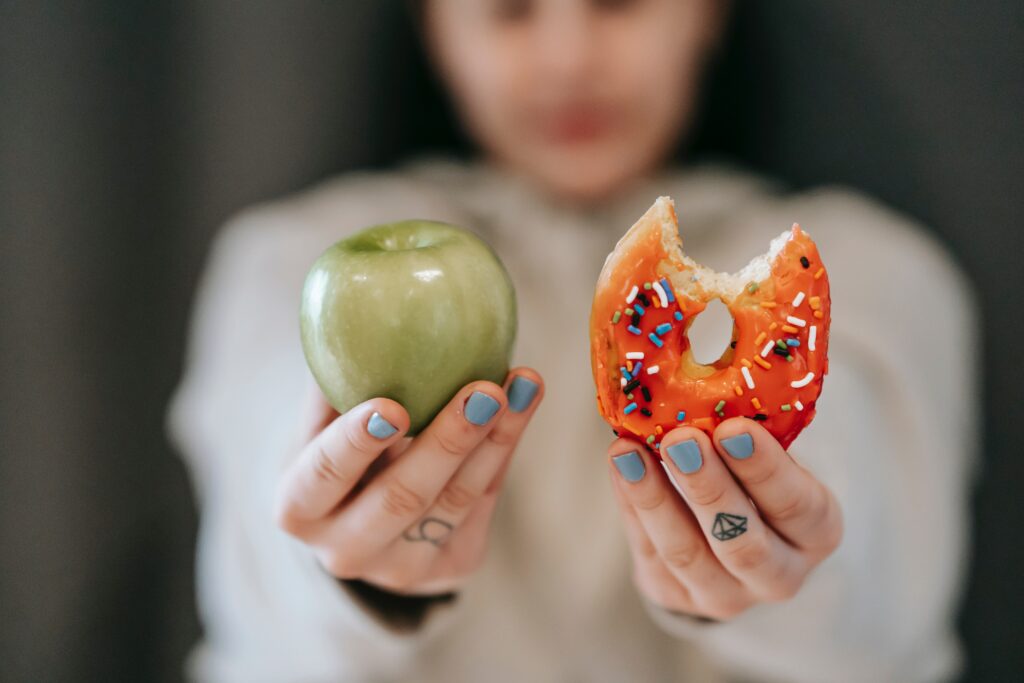
As we have mentioned before, obesity plays a huge factor in your joint health. Managing your weight can bring many healthcare benefits including improving your cardiovascular health, your lungs and even your mood! If you are suffering from weight-related knee pain, you should consider speaking to your doctor or a dietician about weight loss options.

Physiotherapy isn’t necessarily only for those with injuries. You may consider physiotherapy as a preventative route to reduce your risk of knee pain or injury. Physiotherapists can help by strengthening your surrounding muscles to help give your knee joint more support.
We already suggested physiotherapy in the previous section but what if there was something better than just physiotherapy?
Hi-Bliss Hydrogen Therapy combines the anti-inflammatory properties of Molecular Hydrogen and a team of highly-trained physiotherapists to help people who are suffering from knee pain improve their condition and reclaim their active and healthy lives.
During your first session with Hi-Bliss, our physiotherapists will conduct a few health assessments to identify the state of your condition. It will be helpful to bring some of your scans or medical reports from previous doctor visits.
Then, our therapists will perform a palpation check, a sense-of-touch test to identify muscle weaknesses and stiffnesses.
When that is done and treatment points are identified, our physiotherapists will spray molecular hydrogen gas onto your body.
Hydrogen gas is non-invasive but due to its nature as the smallest molecule, it can penetrate your skin painlessly to relieve inflammation in your body and joints. This is done by reducing oxidative stress by neutralising free radicals. There are no side effects to Hydrogen Therapy so no worries and no fuss. All you need to do while undergoing Hydrogen Therapy is just relax!
After being sprayed with Hydrogen gas, our therapists will conduct manipulation on your body. This includes some static stretching and massages.
Finally, your Hi-Bliss Therapist will teach you some basic stretching and strengthening exercises to do at home for a holistic healing experience.
Initially struggling with limited mobility, Mdm Low had difficulty performing everyday tasks like lifting her arms and raising her legs, which greatly affected her quality of life. Through the expert guidance and care of the dedicated team at Hi-Bliss, Mdm Low was able to regain her strength and mobility.
Mdm Low started her journey with us with complaints of pain in her right arm and difficulty of lifting fully. Her left upper arm also had a lot of tightness. This impeded her daily life and her ability to comfortably wear her clothes.
After her consultation with our Hi-Bliss Health Consultants, she was prescribed our Muscle & Joint Program.
After only 3 sessions, she saw significant improvement in mobility and range of motion. Her lateral arm raises moved from 120 degrees of movement to 165 degrees of movement while her front arm raises improved from 110 degrees to 150 degrees.
If you are interested in improving your strength and mobility, we recommend that you visit our centres and discuss your health condition with our healthcare consultants.
Learn more about our Muscle & Joint Program here: https://hi-bliss.com/muscle-joint-programs/
Can’t sleep? If you struggle to fall asleep or stay asleep at night, it can take a huge toll on your health and well-being.
Insomnia is the inability to fall asleep or stay asleep at night, resulting in unrefreshing or non-restorative sleep. And it is a very common problem which has great ramifications as people who suffer from insomnia tend to have low energy, an inability to focus, inability to function during the day, grumpiness or even depression. Chronic insomnia can even contribute to serious health problems.
Some people struggle to get to sleep no matter how tired they are. Others wake up in the middle of the night and lie awake for hours, anxiously watching the clock. But, because different people need different amounts of sleep, insomnia is defined by the quality of your sleep and how you feel after sleeping - not the number of hours you sleep or how quickly you doze off. Even if you are spending eight hours a night in bed, if you feel drowsy and fatigued during the day, you may be experiencing insomnia.
Although insomnia is the most common sleep complaint, it is not a single sleep disorder. It is more accurate to think of insomnia as a symptom of another problem. The problem causing the insomnia differs from person to person. It could be something as simple as drinking too much caffeine during the day or a more complex issue like an underlying medical condition or feeling overloaded with stress or responsibilities.
What are the Symptoms of insomnia?
Insomnia is generally split into two types. The first is acute insomnia which is short-term and typically lasts for a few weeks. The second is chronic insomnia which is when sleepless nights occur a few times a week for more than three months.
Causes of insomnia: Figuring out why you can’t sleep
In order to help with sleep, we must first identify which category the individual’s insomnia falls under. The first category is primary insomnia which would indicate that the insomnia is not caused by any health conditions. The other category is secondary insomnia which would identify health problems or substance abuse as the cause of the insomnia.
Here are some causes of primary insomnia:
Now that we have the causes of primary insomnia out of the way. Let us take a deep dive into the causes of secondary insomnia. They include:
Here are some questions that may help you identify whether you have primary or secondary insomnia:-
How to get the sleep that you need
Whether you’re looking to resolve a specific sleep problem, or just want to feel more productive, mentally sharp, and emotionally balanced during the day, experiment with the following sleep tips to see which work best for you:
Primary/acute insomnia is relatively easy to treat and often the simplest methods prove to be the most effective. Secondary insomnia is harder to treat than primary insomnia and the doctor may suggest behavioural therapy as a way to cure it. These require a change in lifestyle patterns and adopting habits that promote sleep.
It is extremely important that we practice good sleeping habits as it could affect our ability to perform during the day. Insomnia can be extremely frustrating so we must definitely take the necessary steps to ensure that we do not suffer from it. Sleep is something that most people nowadays pay little to no attention to so we must spread the word of its importance and overall effect on the human body.
Learn more how Hi-Bliss Hydrogen Therapy can help with Insomnia here: https://hi-bliss.com/our-wellness-programs/
How much sleep do you need? What happens when you don’t get enough? By understanding your body’s needs, you can improve your sleep schedule and the quality of your waking life.
The quality of your sleep at night directly affects your mental and physical health and how well you feel during the day. Sleep impacts your productivity, emotional balance, brain and heart health, immune function, creativity, vitality, and even your weight. No other activity delivers so many benefits with so little effort!
Minimal sleep loss can take a substantial toll on your mood, energy, mental sharpness, and ability to handle stress. And over the long-term, chronic sleep loss can wreak havoc on your mental and physical health. Sleep isn’t merely a time when your body shuts off. While you rest, your brain stays busy, overseeing biological maintenance that keeps your body running in top condition, preparing you for the day ahead. Without enough hours of restorative sleep, you won’t be able to work, learn, create, and communicate at a level even close to your true potential. Regularly skimp on “service” and you’re headed for a major mental and physical breakdown.
Facts about Sleep
How much sleep do you need?
There is a big difference between the amount of sleep you can get by on and the amount you need to function optimally. According to the National Institutes of Health, the average adult sleeps less than seven hours per night. In today’s fast-paced society, six or seven hours of sleep may sound pretty good. In reality, though, it’s a recipe for chronic sleep deprivation.
While sleep requirements vary slightly from person to person, most healthy adults need seven to nine hours of sleep per night to function at their best. Children and teens need even more. And despite the notion that our sleep needs decrease with age, most older people still need at least seven hours of sleep. Since older adults often have trouble sleeping this long at night, daytime naps can help fill in the gap.
The best way to figure out if you’re meeting your sleep needs is to evaluate how you feel as you go about your day. If you’re having enough sleep hours, you’ll feel energetic and alert all day long, from the moment you wake up until your regular bedtime. Here’s a chart on the Average Sleep Needs by Age (from the National Sleep Foundation) as a guide:-

Signs that you’re not getting enough sleep
If you’re getting less than eight hours of sleep each night, chances are you’re sleep deprived. What’s more, you probably have no idea just how much lack of sleep is affecting you. How is it possible to be sleep deprived without knowing it? Most of the signs of sleep deprivation are much more subtle than falling face first into your dinner plate. Here are some signs that you may be sleep deprived: -
The effects of sleep deprivation
Sleep deprivation has a wide range of negative effects that go way beyond daytime drowsiness. Lack of sleep affects your judgment, coordination, and reaction times. Here are some of the effects of sleep deprivation:
Sleep deprivation has a direct link to overeating and weight gain. There are two hormones in your body that regulate normal feelings of hunger and fullness. Ghrelin stimulates appetite, while leptin sends signals to the brain when you are full. However, when you don’t get the sleep you need, your ghrelin levels go up, stimulating your appetite so you want more food than normal. At the same time, your leptin levels go down, meaning you don’t feel satisfied and want to keep eating. So, the more sleep you lose, the more food your body will crave.
Learn more how Hi-Bliss Hydrogen Therapy can help with Sleep here: https://wordpress-851564-2937612.cloudwaysapps.com/treatment-services-stress-relief/
Sources:
HelpGuide, The National Institutes of Health, The National Sleep Foundation
Experiencing pandemic fatigue? We need to take proactive steps to protect our psychological well-being. Here are 8 tips based on real situations, to help you maintain good physical and mental health during this difficult time.

To stay connected to others, regularly speak with work colleagues, your family and friends.

To reduce stress, structure your days. Take regular breaks and adapt your daily life to the current situation.

To prevent a feeling of helplessness, plan your day as much as possible. Take charge of how you will spend your time.

Separate your leisure and work activities to ensure efficiency and maintain a work-life balance.

Look after your mental and physical health with regular physical and relaxation exercises, to ensure your physical and mental well-being.

Be selective and limit the time you spend watching the news (including deactivating notifications) to maintain your peace of mind.

To keep your energy levels up and stay positive, spend some time on creative activities, and at the end of the day, review what you have achieved.

Keep to regular mealtimes, and opt for a light, varied and balanced diet to maintain energy levels and boost your immune system.
STRESS, just the mere mention of the term can cause splitting headaches or a chill up your spine. Stress is a natural feeling of not being able to cope with specific demands and events. However, stress can become a chronic condition if a person does not take steps to manage it.
In today’s world, people in the workforce have been known to be ‘stressed out’ due to looming deadlines or an inability to do their assigned projects. It has also been exaggerated and people may say they are ‘stressed out’ over the slightest things when they are actually fine. Stress could also be a result of external factors outside the workforce such as a person’s domestic life, income issues or the current political climate.
Stress can be a motivator, and it can even be essential to survival. The body’s fight-or-flight mechanism tells a person when and how to respond to danger. However, when the body becomes triggered too easily, or there are too many stressors at one time, it can undermine a person’s mental and physical health and become harmful. Many people often respond to stress in different ways, either mentally, physically or emotionally. The first step to relieving stress is to identify it immediately.
Defining stress
Stress is a normal biological reaction to a potentially dangerous situation. When you encounter sudden stress, your brain floods your body with chemicals and hormones such as adrenaline and cortisol.
That gets your heart beating faster and sends blood to muscles and important organs. You feel energized and have heightened awareness so you can focus on your immediate needs. These are the different stages of stress and how people adapt.
There are several types of stress, including:
Acute stress
Acute stress happens to everyone. It’s the body’s immediate reaction to a new and challenging situation. It’s the kind of stress you might feel when you narrowly escape a car accident. Acute stress can also come out of something that you actually enjoy. It’s the somewhat-frightening yet thrilling feeling you get on a roller coaster or when skiing down a steep mountain slope.
These incidents of acute stress don’t normally do you any harm. They might even be good for you. Stressful situations give your body and brain practice in developing the best response to future stressful situations. Once the danger passes, your body systems should return to normal.
Severe acute stress is a different story. This kind of stress, such as when you’ve faced a life-threatening situation, can lead to post-traumatic stress disorder (PTSD) or other mental health problems.
Episodic acute stress
Episodic acute stress is when you have frequent episodes of acute stress.
This might happen if you’re often anxious and worried about things you suspect may happen. You might feel that your life is chaotic, and you seemingly go from one crisis to the next. Certain professions, such as law enforcement or firefighters, might also lead to frequent high-stress situations.
As with severe acute stress, episodic acute stress can affect your physical health and mental well-being.
Chronic stress
When you have high-stress levels for an extended period of time, you have chronic stress. Long-term stress like this can have a negative impact on your health. It may contribute to:
Chronic stress can also lead to frequent ailments such as headaches, an upset stomach, and sleep difficulties. Gaining insights into the different types of stress and how to recognize them may help.
Here are some common signs that an individual is under stress:
While everyone exhibits the symptoms of stress differently, there is a common pattern when identifying stress and the exhibition of 2 or more of these symptoms should project the image of an individual who is stressed.
Causes of Stress
People react differently to stressful situations. What is stressful for one person may not be stressful for another, and almost any event can potentially cause stress. There is no identifiable reason why one person may feel less stressed than another when facing the same stressor. Mental health conditions, such as depression, or a building sense of frustration, injustice, and anxiety can make some people feel stressed more easily than others, as to previous experiences which may affect how a person reacts to stressors.
Common major life events that can trigger stress include:
Other commonly reported causes of stress are:
There’s no end to the things that can cause a person stress because they’re as varied as people are. Whatever the cause, the effect on the body can be serious if left unmanaged. Now that we have identified the problem, it is time to find solutions. Once an individual recognizes the signs of stress, there are many tips and tricks that he/she could use to alleviate and reduce stress.
Tips to reduce stress:
There are many methods to reduce the amount of stress in our lives. I am particularly fond of exercising as there is nothing that cannot be cured by a quick 30 minute run or jog. Jogs in the park or up a hill where the eye can see nothing but green can be the welcome change that a stressed out mind needs from our everyday concrete jungles.
One thing that is often overlooked by many is the need to get enough sleep or rest. Working into the late hours of the night is very unhealthy as it stops the body’s natural process in eliminating toxins. Another problem that often plagues individuals is the need to unwind on the weekends by spending hours partying or gaming into the night. Many think that this is the solution to stress but it is actually counterproductive as the body is not able to get enough rest. Doing fun things you enjoy is necessary but moderation is the key as too much fun does not give the body enough time to rest.
At Hi-Bliss, our hydrogen therapy helps reduce stress as the tiny hydrogen molecules are able to penetrate the epidermis and neutralise free-radicals that cause inflammation. Our certified physiotherapist will further help alleviate stress with light manipulation and exercise techniques suited to your condition. A visit to one of our centres would do with helping you de-stress.
Let’s look at the effects stress has on our bodies and the simple ways to manage and relieve chronic stress in the next blog.
Learn more how Hi-Bliss Hydrogen Therapy can help reduce Stress here: https://wordpress-851564-2937612.cloudwaysapps.com/treatment-services-stress-relief/
Sources:
https://my.clevelandclinic.org/health/articles/11874-stress
Stress is a natural physical and mental reaction to life experiences. Everyone expresses stress from time to time. Anything from everyday responsibilities like work and family to serious life events such as a new diagnosis, war, or the death of a loved one can trigger stress.
For immediate, short-term situations, stress can be beneficial to your health. It can help you cope with potentially serious situations. Your body responds to stress by releasing hormones that causes your heart races, your breath quickens, and your muscles ready for action. This response was designed to protect your body in an emergency by preparing you to react quickly. But when the stress response keeps firing, and these stress levels stay elevated far longer than is necessary for survival, it could put your health at serious risk.
Chronic stress can cause a variety of symptoms and affect your overall well-being, leading to several complications, including:
Stress stimulates the immune system, which can be a plus for immediate situations. This stimulation can help you avoid infections and heal wounds. But over time, stress hormones will weaken your immune system and reduce your body’s response to foreign invaders. People under chronic stress are more susceptible to viral illnesses like the flu and the common cold, as well as other infections. Stress can also increase the time it takes you to recover from an illness or injury.

Your central nervous system (CNS) oversees your “fight or flight” response. In your brain, the hypothalamus gets the ball rolling, telling your adrenal glands to release the stress hormones adrenaline and cortisol. These hormones rev up your heartbeat and send blood rushing to the areas that need it most in an emergency, such as your muscles, heart, and other important organs.
When the perceived fear is gone, the hypothalamus should tell all systems to go back to normal. If the CNS fails to return to normal, or if the stressor doesn’t go away, the response will continue Chronic stress is also a factor in behaviors such as overeating or not eating enough, alcohol or drug abuse, and social withdrawal.
Stress hormones affect your respiratory and cardiovascular systems. During the stress response, you breathe faster to quickly distribute oxygen-rich blood to your body. If you already have a breathing problem like asthma or emphysema, stress can make it even harder to breathe.
Under stress, your heart also pumps faster. Stress hormones cause your blood vessels to constrict and divert more oxygen to your muscles, so you’ll have more strength to take action. But this also raises your blood pressure. As a result, frequent or chronic stress will make your heart work too hard for too long. When your blood pressure rises, so do your risks for having a stroke or heart attack.
Under stress, your liver produces extra blood sugar (glucose) to give you a boost of energy. If you’re under chronic stress, your body may not be able to keep up with this extra glucose surge. Chronic stress may increase your risk of developing type 2 diabetes.
The rush of hormones, rapid breathing, and increased heart rate can also upset your digestive system. You’re more likely to have heartburn or acid reflux thanks to an increase in stomach acid. Stress doesn’t cause ulcers (a bacterium called H. pylori often does), but it can increase your risk for them and cause existing ulcers to act up.
Stress can also affect the way food moves through your body, leading to diarrhea or constipation. You might also experience nausea, vomiting, or a stomachache.
Your muscles tense up to protect themselves from injury when you’re stressed. They tend to release again once you relax, but if you’re constantly under stress, your muscles may not get the chance to relax. Tight muscles cause headaches, back and shoulder pain, and body aches. Over time, this can set off an unhealthy cycle as you stop exercising and turn to pain medication for relief.
Stress is exhausting for both the body and mind. It’s not unusual to lose your desire when you’re under constant stress. If stress continues for a long time, a man’s testosterone levels can begin to drop. This can interfere with sperm production and cause erectile dysfunction or impotence. Chronic stress may also increase risk of infection for male reproductive organs like the prostate and testes.
For women, stress can affect the menstrual cycle. It can lead to irregular, heavier, or more painful periods. Chronic stress can also magnify the physical symptoms of menopause.
Improving your ability to handle and manage stress
In order to manage your stress, first you have to identify the things that cause you stress — or your triggers. Figure out which of these things can be avoided. Then, find ways to cope with those negative stressors that can’t be avoided.
Over time, managing your stress levels may help lower your risk for stress-related diseases. And it’ll help you feel better on a daily basis, too.
Get Moving. Regular exercise can lift your mood and serve as a distraction from worries, allowing you to break out of the cycle of negative thoughts that feed stress. Rhythmic exercises such as walking, running, swimming, and dancing are particularly effective, especially if you exercise mindfully (focusing your attention on the physical sensations you experience as you move).
Connect to others. The simple act of talking face-to-face, a brief exchange of kind words or a friendly look from another human can trigger hormones that relieve stress when you’re feeling agitated or insecure and soothe your nervous system. If you don’t have any close relationships, or your relationships are the source of your stress, make it a priority to build stronger and more satisfying connections.
Engage your senses. Another fast way to relieve stress is by engaging one or more of your senses—sight, sound, taste, smell, touch, or movement. The key is to find the sensory input that works for you. Does listening to an uplifting song make you feel calm? Or smelling ground coffee? Or maybe petting an animal works quickly to make you feel centered? Everyone responds to sensory input a little differently, so experiment to find what works best for you.
Learn to relax. You can’t completely eliminate stress from your life, but you can control how much it affects you. Relaxation techniques such as yoga, meditation, deep breathing and massages activate the body’s relaxation response, a state of restfulness that is the polar opposite of the stress response. When practiced regularly, these activities can reduce your everyday stress levels and boost feelings of joy and serenity. They also increase your ability to stay calm and collected under pressure.
Eat a healthy diet. The food you eat can improve or worsen your mood and affect your ability to cope with life’s stressors. Processed and fast food, refined carbohydrates, and sugary snacks can worsen symptoms of stress, while a healthy diet rich in fresh fruit and vegetables, high-quality protein, and omega-3 fatty acids, can help you better cope with life’s ups and downs.
Reducing the intake of alcohol, drugs, and caffeine. These substances will not help prevent stress, and they can make it worse.
Time: People should set aside some time to organize their schedules, relax, and pursue their own interests.
Get your rest. Feeling tired can increase stress by causing you to think irrationally. At the same time, chronic stress can disrupt your sleep. Whether you’re having trouble falling asleep or staying asleep at night, there are plenty of ways to improve your sleep so you feel less stressed and more productive and emotionally balanced.
Noticing signs and symptoms is the first step to taking action. Most people have an activity that helps them relax, such as reading a book, going for a walk, listening to music, or spending time with a friend, loved one, or pet. Joining a choir or a gym also helps some people relax.
Learn more how Hi-Bliss Hydrogen Therapy can help reduce Stress here: https://hi-bliss.com/our-wellness-programs/
Migraine is a brain disorder related to disturbances in the brain homeostasis and it leads to activation of the trigeminovascular system, stimulation of cerebral vessels’ nociceptors, and further signal transmission in the brain. Thus, further signal transmissions result in the stimulation of particular regions of the brain responsible for the clinical manifestations of migraine (triggering pain symptoms, experiencing pain or neurological symptoms). In short, Migraine is a primary headache disorder characterized by recurrent headaches that are moderate to severe. Typically, episodes affect one half of the head, are pulsating in nature, and lasts from a few hours to 3 days.
In the modern world, almost everybody suffers from a migraine disorder. According to WHO, half of the adult population will face migraines at least once within a year. Approximately 15% of the world encounters migraines. Migraine, which is the primary headache disorder, is a tensional and medication-overuse type of headache which hold a high population of health-related disability.

If you encounter headaches with the symptoms listed below, you might be having a migraine instead:

The four phases of a migraine
There are four possible stages to a migraine, although not everybody will experience all four phases. The four phases are the Prodrome phase, Auro phase, Pain phase and Postdrome phase.
Prodrome phase
Migraine symptoms may begin one or two days before the headache itself. The following symptoms may occur:
Aura phase
The aura occurs after the prodrome phase. Clinical characteristics of the migraine aura include transient visual and sensory disturbances (uni- or bilateral) as well as motor symptoms due to recurrent brain dysfunction. Visual disturbances are reported most frequently. Aura may contribute to the so-called migrainous stroke, i.e. an episode of cerebral ischemia with neurological deficits. During an aura, you may encounter visionary, sensational, movement and speech problems. These symptoms stem from your nervous system and often involve your vision. They usually start gradually, over a 5- to 20-minute period, and last less than an hour. You may experience:
Pain phase
Also known as headache attack phase. The attack phase is most acute or severe of the phases when the actual migraine pain occurs. Attack phase symptoms can last anywhere from a few hours to a few days. About 80% of people have nausea along with a headache, and about half vomit.
Postdrome phase
After the attack phase, an individual will often experience the postdrome stage. During this phase, there are usually extreme changes in mood and feelings. These can range from feeling euphoric and extremely happy, to feeling very tired and apathetic. A mild and dull headache may still persist.

Migraine Causes
Scientists believe that migraines can be caused by changes in the blood flow of the brain. Migraines start when overactive nerve cells send out signals that activate the trigeminal nerve (the nerve that supplies sensation to head and face). Activation of the nerve triggers the release of certain chemicals such as serotonin and calcitonin gene-related peptide (CGRP). CGRP results in the swelling of the blood vessels in the lining of the brain. This releases neurotransmitters that create inflammation and pain.
The following factors may cause or trigger migraines:
The factors above are reactive oxygen species ROS (or free radicals) in our life which are unavoidable. Imbalanced free radicals and antioxidants in our body will cause oxidative stress which can cause a migraine. When oxidative stress builds up in our body, the following will happen:
Free Radicals and Migraine
Oxidative stress has been known to be implicated in the pathophysiology of migraines. A study has found that increased oxidative stress is associated with migraines and contributes to migraine-related metabolic risk like nitrosative stress, an atherogenic lipid profile and hyperinsulinemia. All these oxidative stress buildup will influence brain homeostasis and inconsequence which triggers hypothalamus activation. This will lead to disruption and alteration of cortical and brainstem excitability which will result in brainstem activation. All of this will cause migraine pain. In conclusion, oxidative stress may represent a key event in the pathophysiology of migraine and is a suitable therapeutic target.
A study has found that individuals with migraines have higher levels of oxidative stress. These speculated theories pay significant attention to oxidative stress, as it has been understood as a disturbance in the reactive oxygen species (ROS) production–degradation balance. As such, this phenomenon is involved in the etiopathogenesis of numerous diseases such as atherosclerosis, reduced kidney function, or ischemic stroke. Recently, it is also considered to be one of the factors leading to the development of neurodegenerative and neuroinflammatory diseases of the central nervous system, e.g., multiple sclerosis, Alzheimer’s disease, or Parkinson’s disease.
Risk factors for oxidative stress
Hydrogen Therapy and Migraine
Molecular hydrogen, which is the most powerful and smallest antioxidant, can penetrate through the blood-brain-barrier which is located deep inside our body and enter the cells of the brain to neutralise the inflammation and damage caused by oxidative stress. It works by regulating oxidative stress and antioxidant level in the brain, stabilizing neuro-chemical dysfunction, eliminating factors contributing to insulin resistance in the brain and reducing the chronic inflammation. With these, it reduces the discomfort caused by migraine and also reduces the frequency of migraine attack.
In other circumstances, tightness on the neck and shoulder muscle which is caused by improper posture can also cause migraines as muscle tightness can restrict the blood flow to the brain, decreasing the oxygen that is able to reach the brain cells and activating the trigeminal sensory nerve that leads to migraine.
A combination of hydrogen therapy and exercise programs are able to soften the tightness of the affected muscle, thus promoting blood circulation to the brain area and neutralising oxidative stress in the brain which can reduce the frequency of migraine attack.
Hi-Bliss hydrogen therapy provides the hydrogen and physiotherapy treatments to treat migraines caused by poor blood circulation towards the brain area. These treatments can help to improve blood circulation towards the brain area and the manipulation done by our physiotherapist can help further soften the affected muscle tightness. We use hydrogen gas to suppress the inflammation caused by free radicals and promote the healing process in the affected area. Our physiotherapist provides manual therapy and exercise to the client so that it can help the body absorb hydrogen more effectively.
Exercise is also very important to the body. Regular exercise can reduce the frequency and intensity of headaches and migraines. The body releases endorphins when exercising and they are the body's natural painkillers. Exercise reduces stress and helps individuals to sleep at night.
Stress and inadequate sleep are two migraine triggers. Some people may get headaches or migraines when they exercise. One possible reason for this is that a part of the physical reaction may be the elevation of blood pressure. This is not a reason to avoid exercising. Instead, headache and migraine patients need a plan to prevent headaches or migraines when they exercise.
Learn more how Hi-Bliss Hydrogen Therapy can help reduce Stress here: https://hi-bliss.com/our-wellness-programs/
What you eat can play both a positive and negative role in managing chronic inflammation. Though Diet alone will not control inflammation but making suitable choices may help prevent it from getting worse.
Natural anti-inflammatories are foods that you can eat to lower your odds of having inflammation. If you have a condition that causes inflammation, it may help to change your eating habits. If you have a condition like rheumatoid arthritis, changing what's on your plate won’t be a magic cure. But an anti-inflammatory diet might lessen the number of flare-ups you have, or it might help take your pain down a few notches.
An anti-inflammatory diet is widely regarded as healthy. Even if it doesn't help with your condition, it can help lower your chances of having other problems.
A variety of foods have anti-inflammatory properties. These include foods that are high in antioxidants and polyphenols, such as fruits and vegetables, whole grains, plant-based proteins (like beans and nuts), fatty fish, and fresh herbs and spices.
Inflammation resulting from lifestyle factors, such as obesity, smoking, and a sedentary existence can contribute to a range of diseases. These include heart disease, diabetes, rheumatoid arthritis, and Alzheimer’s. Having diabetes, being overweight, having obesity, and eating high levels of saturated fats, trans fats, and refined sugar are all risk factors for chronic inflammation.
The following table lists diet and lifestyle changes that may help reduce chronic inflammation.
| Dietary and lifestyle changes | Reasons |
| Adopt a low glycemic diet | High sugar intake links to chronic inflammation, stroke risk, coronary heart disease risk, and type 2 diabetes risk. Soda, refined carbohydrates, and high fructose corn syrup are foods that can promote inflammation. |
| Try a low-fat diet | Saturated and trans fats worsen inflammation. People should try to reduce or eliminate processed and packaged foods that have trans fats from processed vegetable or seed oil, and baked goods with soybean or corn oil. |
| Eat plenty of fruits and vegetables | These foods are high in antioxidants and other anti-inflammatory compounds that can help reduce the risk of chronic inflammation. |
| Get enough fiber | Researchers have shown an association between high fiber diets and lower inflammatory factors, such as TNF-alpha and interleukin-6. |
| Eat more nuts | Almonds and other nuts may help to lower the risk of cardiovascular disease and diabetes. Cardiovascular diseases, such as atherosclerosis, are pro-inflammatory states. Diabetes is a chronic inflammatory disease. |
| Drink green and black teas | Scientists have associated compounds found in green and black teas with lower C-reactive protein in the blood. |
| Add curcumin to food | A component in turmeric called curcumin improves several inflammatory diseases |
| Add fish oil to the diet Omega-3 | fatty acids positively affect lower levels of inflammatory factors in the blood, such as C-reactive protein, interleukin-6, and TNF-alpha. |
| Eat more mung beans | These beans may have anti-inflammatory properties. |
| Add sesame lignans to the diet | Sesame oil contains sesame lignans, which people associate with decreasing inflammatory factors and improving blood pressure. |
| Exercise regularly | Burning calories through exercise lowers inflammatory factors even if people do not lose weight. |

Anything highly processed, overly greasy, or super sweet isn’t a good choice for you if you have inflammation. The following foods may increase inflammation for some people, hence should be avoided as much as possible:
If you are trying to reduce fight inflammation, try to reduce your intake of these foods. You do not have to eliminate them but try to eat them only occasionally. You can lower your risk of chronic inflammation with changes to what you eat.
Learn more how Hi-Bliss Hydrogen Therapy can help reduce Inflammation here : https://hi-bliss.com/services/
Sources:
